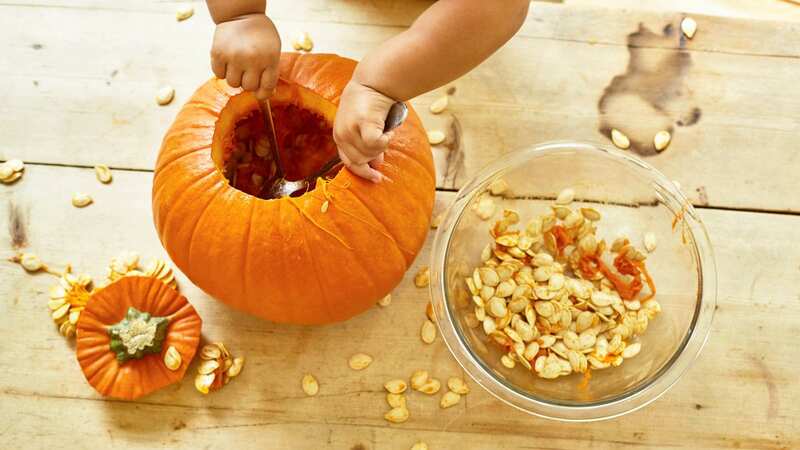Here’s how your leftover pumpkin could help stave off heart disease

With Halloween officially over, many Brits will be tossing their decorative pumpkins into the compost bin - but garden experts have revealed the best way to use the orange fruit after the spooky season.
While festive foodies may consider baking a pumpkin pie, gardening guru Michael Griffiths recommends growing healthy microgreens from the seeds. Also known as @themediterraneangardener, Michael told his 180K TikTok followers: “Don’t throw away the seeds from your Halloween pumpkins, use them to grow delicious microgreens.”
According to WebMD, microgreens contain up to 40 percent more phytochemicals - beneficial nutrients and components - than their full-grown counterparts. It adds that they contain “extremely” high levels of powerful vitamins, minerals and health-supporting components.
To grow these healthy greens, Michael suggests collecting all your pumpkin seeds into a bowl and giving them a thorough wash, making sure to remove all the fibrous strands. Next, grab a plate and a “good amount” of kitchen roll which you should soak in water before rinsing.
Place the damp sheet onto the plate and keep it away from the edges. Michael added: “Get your washed pumpkin seeds and spread them out. Grab another plate and cover them up. Open them up once a day to spray them (with water) so the towel stays moist but not wet and in a few days you’ll see roots.
 Dr Michael Mosley shares exercise that can cut cholesterol and blood pressure
Dr Michael Mosley shares exercise that can cut cholesterol and blood pressure
“Keep them covered until you see green shoots, then uncover them and they’ll grow into pumpkin microgreens. Now they’re ready to harvest and they taste great in salads, soups and stir-fry.” Microgreens have been linked to various health benefits, such as reducing heart disease risk.
Healthline describes microgreens as a “rich source of polyphenols”, which is a class of antioxidants linked to a lower risk of heart disease. Animal studies have found that microgreens may lower triglyceride and “bad” LDL cholesterol levels, added the medical site.
What’s more, type 2 diabetes is a common condition that causes the level of sugar in the blood to become too high, but Cleveland Clinic says microgreens can help to regulate blood sugar levels. The health site writes: “Research on animals shows that broccoli microgreens improve insulin resistance so sugar leaves the blood to enter cells.
“Fenugreek microgreens — a legume that’s a staple in Indian cooking — may also improve how well cells take in sugar by 25% to 44%.” Healthline has backed this knowledge, adding that antioxidants may help reduce the type of stress that can prevent sugar from properly entering cells.
The antioxidant-rich foods, including those with high amounts of polyphenols, have been associated with lower risk of Alzheimer’s disease and a reduced risk of various types of cancer, notes Healthline.
Read more similar news:
Comments:
comments powered by Disqus

































